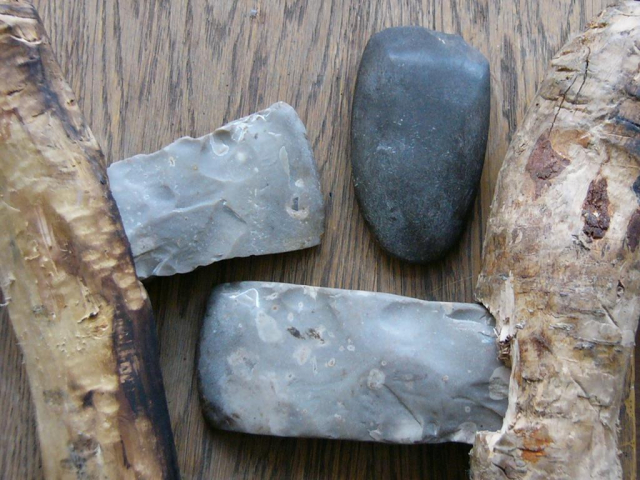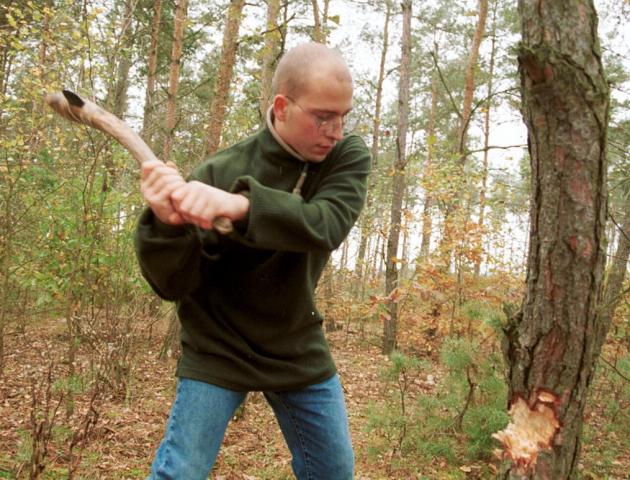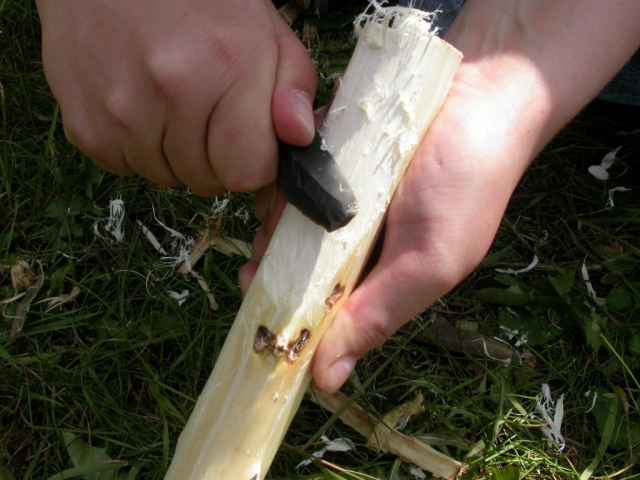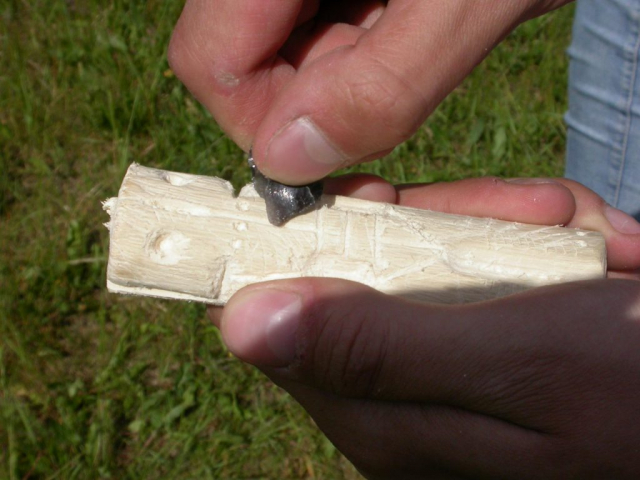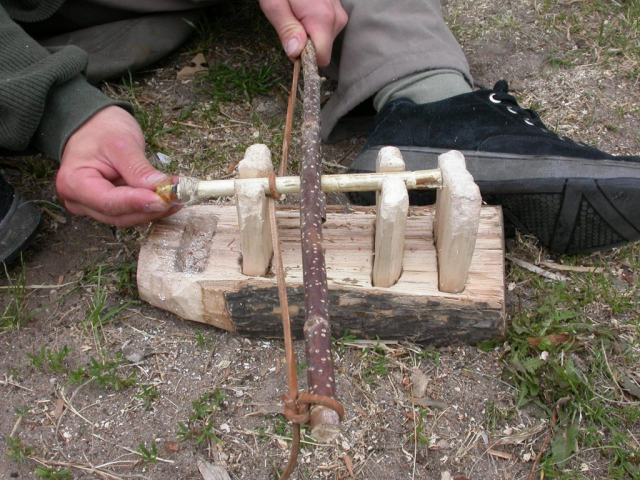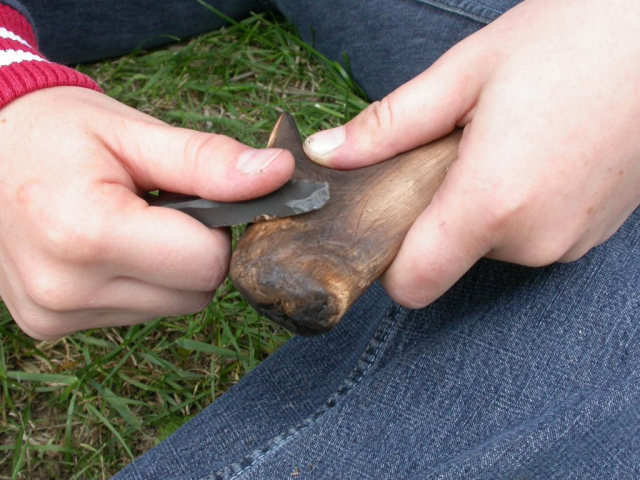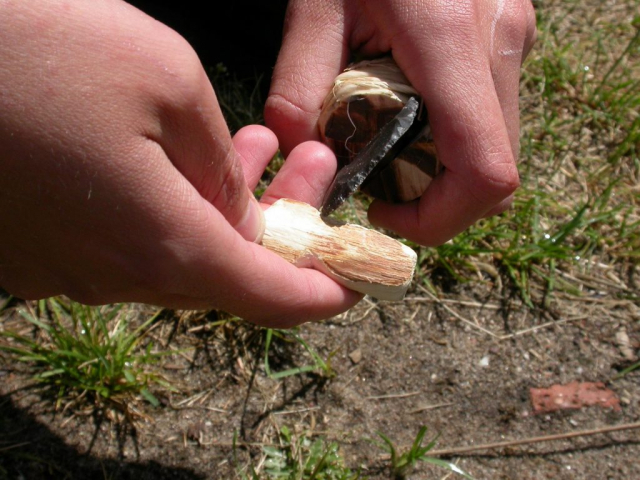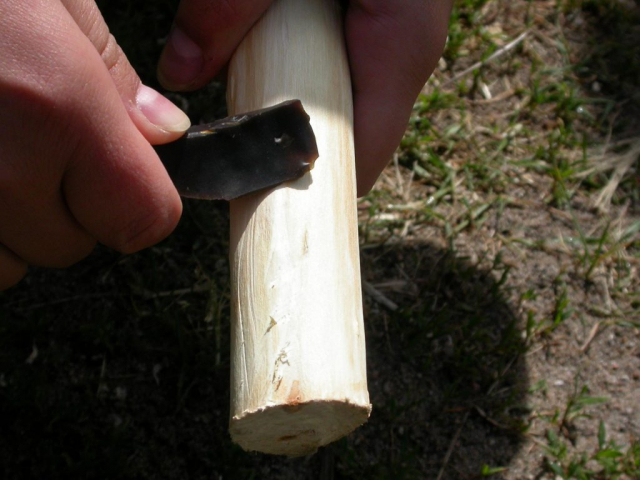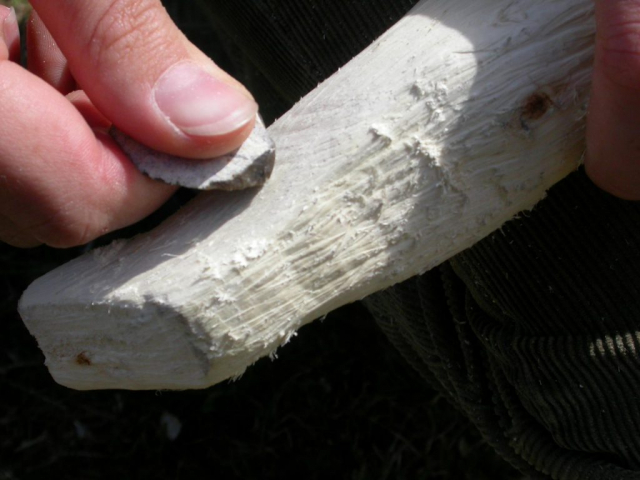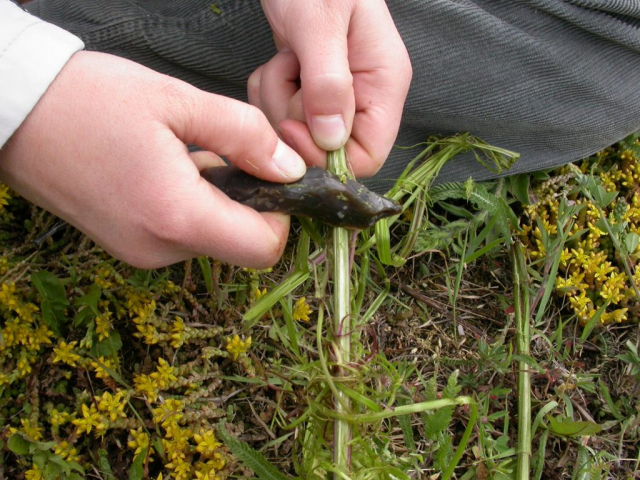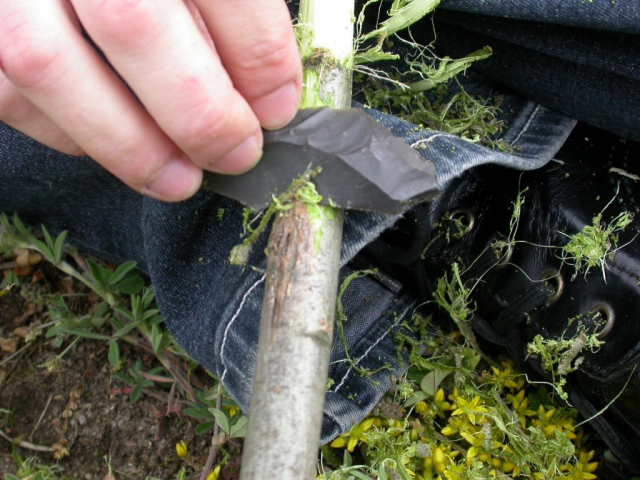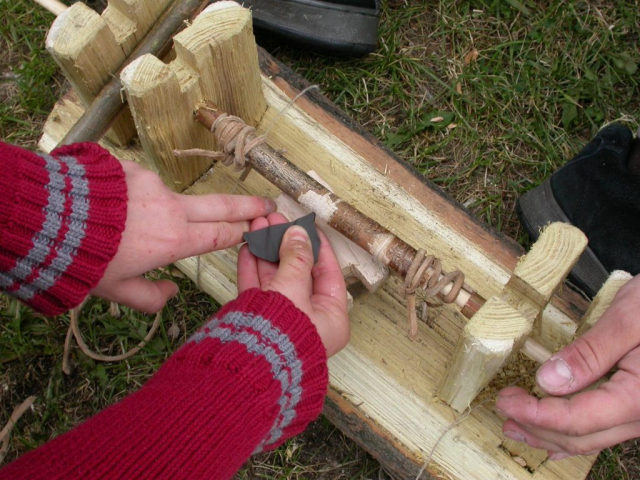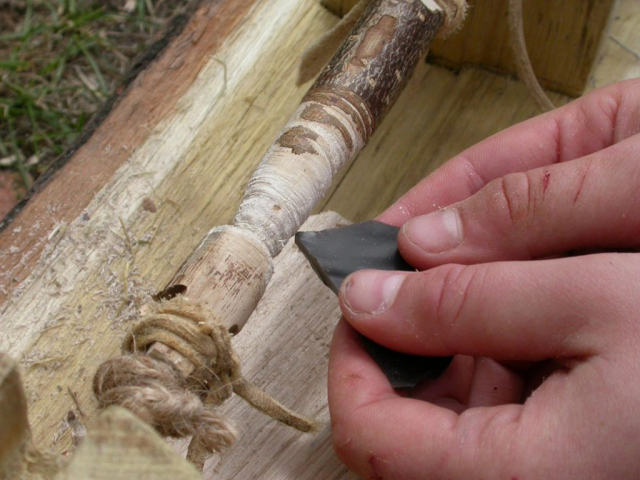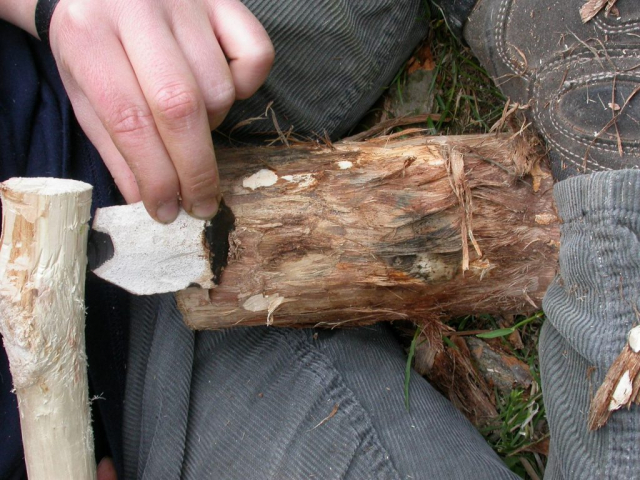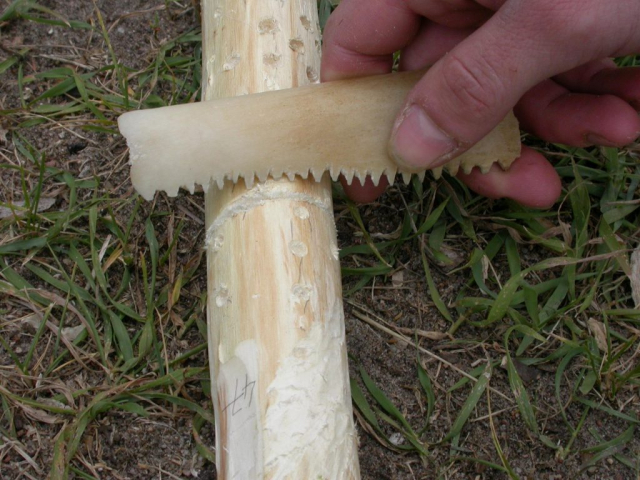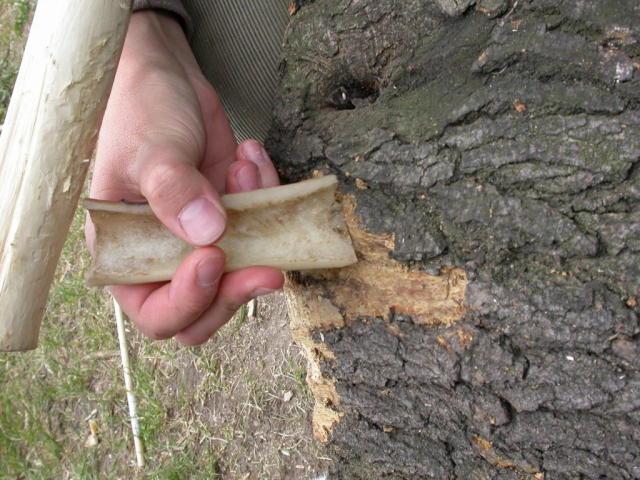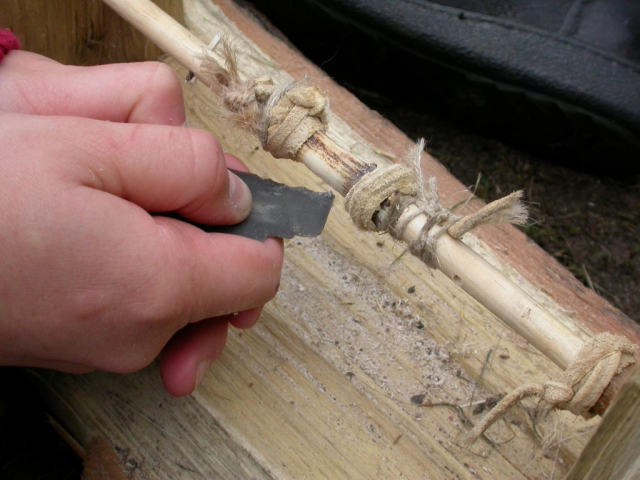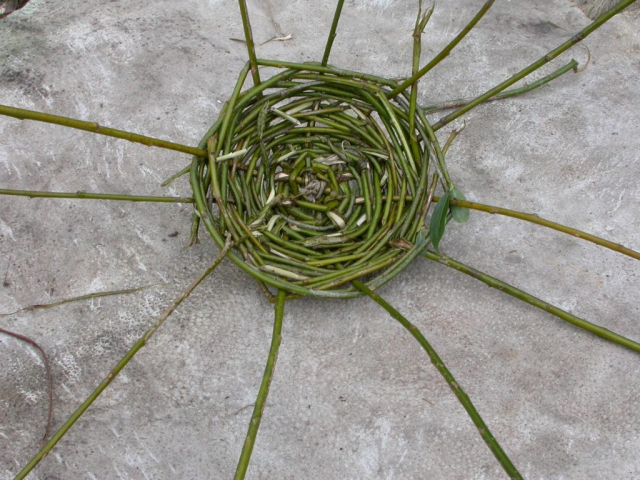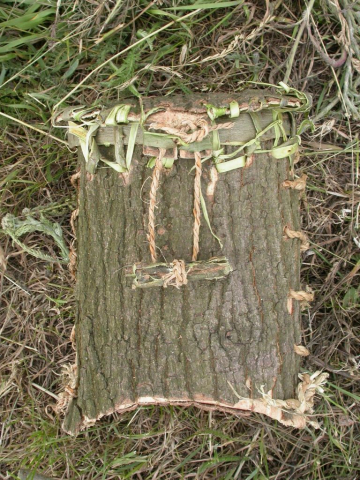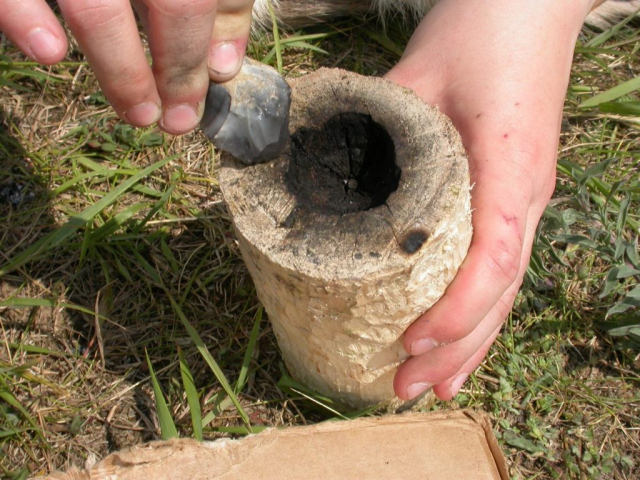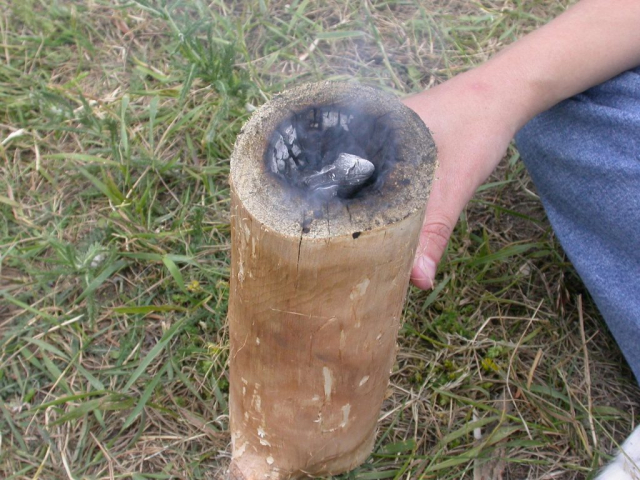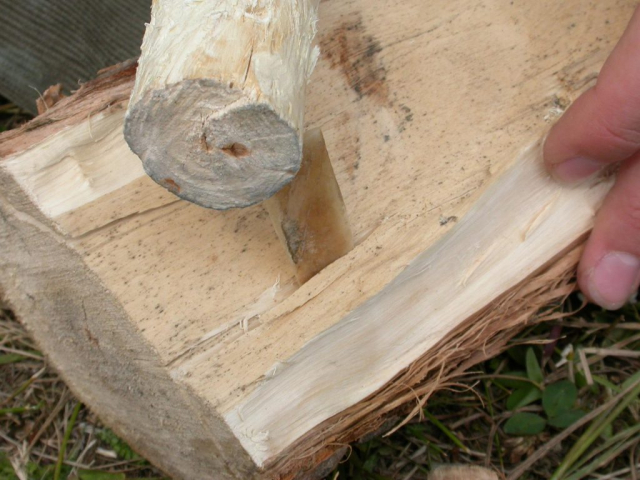Experiments related to materials of plant origin to a greater extent than others are based on presumptions and theories, weakly confirmed by the sources. Although through traceological research of flint antiques we know that what tools were used for treatment of this type of materials, we still know very little what objects were produced from natural materials.
The most commonly used plant material is wood. Depending on future applications of a produced object, one makes use of a various type of wood (hardness, water content, etc.). During the whole process, aiming at implementing a specific wooden object, the members of the Society make use of reconstructions of primaeval tools and techniques, examining at the same time their effectiveness. Starting with stone axes, through stone balls, knives, scrapers, drills, styluses, finishing on fire. Woodworking is accompanied by traceological research of flint tools. Traces formed on tools are then compared to traces on flints found on archaeological sites.
Wood serves also for production of frames for flint tools, ax spars, hewers and harpoons, as well as arrows and harpoon throwers.
A technique associated with a mechanical treatment of wood is a practice related to application of fire for hollow vessels’ production. Wood subjected to a high temperature in a chosen place after charring is removed with scrapers by drilling a recess of a desired shape.
One of the categories of tools fitted in wood are sickles. They are used to acquire other plant materials, namely, for cereals and grass mowing. Grass is used in preparing “primeval meals”, while cereals are a source of grain and straw.
Flint tolls serve also in gathering phloem and bark. From bark one can make containers and bags of various size. From the phloem one plaits baskets as well as ropes, which are unusually strong and thanks to that are widely used in conducting other experiments.
Frequent use of raw materials of plant origin in the primeval times is evidenced in the results of traceological research carried out on found flint tools, which motivates further experiments and even more intensive studies of this field of experimental archeology.
Anna Balonis



